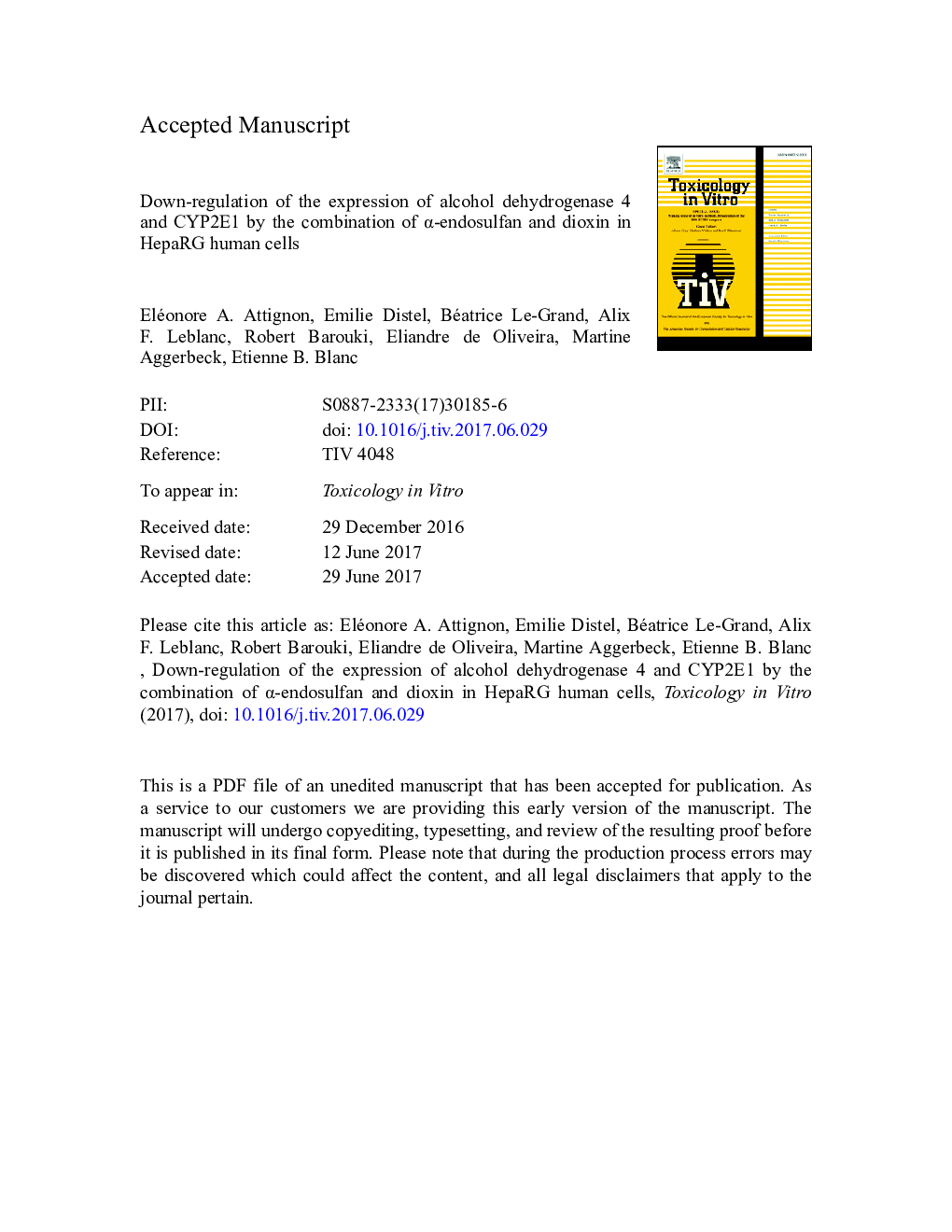| Article ID | Journal | Published Year | Pages | File Type |
|---|---|---|---|---|
| 8554143 | Toxicology in Vitro | 2017 | 32 Pages |
Abstract
Pesticides and other persistent organic pollutants are considered as risk factors for liver diseases. We treated the human hepatic cell line HepaRG with both 2,3,7,8 tetrachlorodibenzo-p-dioxin (TCDD) and the organochlorine pesticide, α-endosulfan, to evaluate their combined impact on the expression of hepatic genes involved in alcohol metabolism. We show that the combination of the two pollutants (25 nM TCDD and 10 μM α-endosulfan) led to marked decreases in the amounts of both the mRNA (up to 90%) and protein (up to 60%) of ADH4 and CYP2E1. Similar results were obtained following 24 h or 8 days of treatment with lower concentrations of these pollutants. Experiments with siRNA and AHR agonists and antagonist demonstrated that the genomic AHR/ARNT pathway is necessary for the dioxin effect. The PXR, CAR and estrogen receptor alpha transcription factors were not modulators of the effects of α-endosulfan, as assessed by siRNA transfection. In another human hepatic cell line, HepG2, TCDD decreased the expression of ADH4 and CYP2E1 mRNAs whereas α-endosulfan had no effect on these genes. Our results demonstrate that exposure to a mixture of pollutants may deregulate hepatic metabolism.
Keywords
Related Topics
Life Sciences
Environmental Science
Health, Toxicology and Mutagenesis
Authors
Eléonore A. Attignon, Emilie Distel, Béatrice Le-Grand, Alix F. Leblanc, Robert Barouki, Eliandre de Oliveira, Martine Aggerbeck, Etienne B. Blanc,
